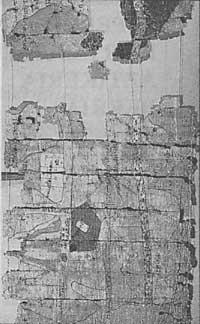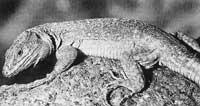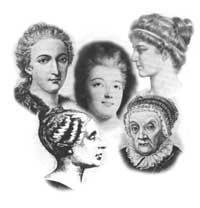Ramón Adán de Yarza
1996/06/01 Astibia, Humberto | Murelaga, Xabier | Nuñez-Betelu, Koldo Iturria: Elhuyar aldizkaria
Every town has had and has its great researchers. His work, although important to science, is left in the shade and often forgotten. In Euskal Herria we have also had this type of characters, among which we must mention Ramón Bonifacio Teodorico Adán de Yarza and the Lequerica Tower (1848-1917). With this brief work that we have wanted to bring to your hand we will try to show the life and importance of the work done by the geologist and naturalist.
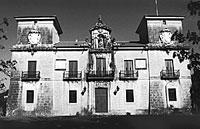
For many researchers, R. Adán de Yarza is the largest geologist in the Basque Country. Proof of this is that, in most of the geological works carried out in the Basque Country, its name is cited, since they are the basis of the geological knowledge of the Basque-Cantabrian Basin. The prestigious geologist Suess, in his book “The face of the Earth”, quoted the Basque geologist, and Odón de Bueno did so in his book “Natural Histora” and the French geologist Pierre Feuille in the 19th century. He studied works on the Cantabrian region of the 20th century.
R. Adam de Yarza was born on June 5, 1848 in the palace that currently occupies the site of the library of Bidebarrieta in Bilbao. His parents were Carlos Adán de Yarza and Clotilde de la Torre de Lequerica. The paternal grandparents were Fernando Adán de Yarza and Ramona de Zorina and those of mother Vicente de la Torre de Lequerica and Monica de Ulibarri. The lineage Adam of Yarza has its roots in Lekeitio and its founder is the XIV. It is Fernando Adán de Yarza of the twentieth century. De la Torre Lequerica has its origin in the branch of Armería de San Sebastián.
Ramon is a young man who does his basic studies at home with a private teacher. He took the high school exams as a free student at the former institute of the highways of Begoña. In 1866 he obtained entry to the Special School of Mining Engineering in Madrid for exaltation. He finished his studies on June 24, 1871 obtaining the 541 general relationship. On February 16, 1894 he applied for the title of engineer himself and obtained it on October 26 of the same year. After finishing his studies, he devoted himself to research and it was then that the last Carlist War began, with which he participated in the defense of Bilbao.
After the Carlist War, he began to investigate on his own. The manuscript of his first work was signed on November 30, 1876, but until 1877 it was not published in the bulletin of the Commission of the Geological Map of Spain. Apart from the Basque Country, he did geological research in other villages, but the most outstanding are the geological memories of Gipuzkoa (1884), Alava (1885) and Bizkaia (1892).
Being a good geologist, he soon reached great prestige. He had a very active professional life and reached several senior positions. Among the most important positions he held, we highlight the following:
- On July 8, 1871 he entered the Corps of Mining Engineers in the post of second engineer and was assigned to the Public Works of Bizkaia as a dependent engineer.
- On 20 January 1880 he was appointed first engineer and second chief of the Bizkaia area.
- In 1892 he was appointed member of the Commission of the Geological Map of Spain, a position with which he concluded his geological formation and thereafter, the XIX. It becomes one of the best petrophones of the twentieth century.
- He was director of the visit of the French Geological Society to Barcelona in 1898.
- On 30 May 1907 he was appointed a member of the Geological Map Commission.
- On the first of June 1907 he obtained the chair of geology of the School of Mining Engineering.
- On 29 May 1908 he was appointed General Engineer first.
- On 28 January 1910 he was officially appointed to the Spanish State Delegation for the International Geology Congress in Stockholm.
- On 27 March 1910 he obtained the position of General Monitor. As a result, although he was allowed to be responsible for practices and continue in the September jury, he had to resign from the chair.
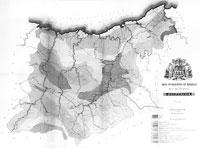
He was also a member of various scientific institutions and a member of the Barcelona Academy of Sciences and Arts. In some of these institutions he received honors.
On 5 June 1915 he requested to advance his retirement and took over the land of Lekeitio and Arrasate. The man who has left a long shadow in the geology of the Basque Country died abandoned on 25 January 1917 in the house of Arrasate.
The name of this great researcher will not be immediately forgotten, among other things, of all the work done by him, so that we can use them. Ramón Adán de Yarza worked many machines and since it is not possible to list all of them, we will highlight some in the table above.
All of the above has been a brief summary of the life and work of this brilliant researcher. The value and contribution of his work and, of course, the great shadows that he has left are very important in Euskal Herria. And since we are scientists, therefore, we do not want to let the name and being of one of the leading Basque geologists be forgotten. That is the goal of this article.
- Geological notes on the iron farm of Somorrostro, in the province of Vizcaya. Bulletin IV; 1877, p. 45
- - Luis Mariano Vidal on the island of Mallorca. Bulletin VI, 1879, p. 23
- The eruptive rocks of Vizcaya. Bulletin VI, 1879, p. 269
- • Bourson (Extract of note about). Bulletin VI, 1879, p. 287
- Bilbo, M. Baills (Extract and observations about). Bulletin VI, 1879, p. 391
- Rock eruptive of Motrico (province of Granada). Anal. S.E. by H.N. VII, 1877 78, pp. 21-25
- Age of offites. Bulletin IX, 1882, p. 93
- The cinnabar farms in California, Nevada and Virginia. Revista Minera, t. 1, series C, year XXXIV, 1883, pp. 87-89.
- - Memoirs, 1884.
- - Memoirs, 1885.
- - Memoirs, 1892.
- Hypogenic rocks of the island of Cuba. Bulletin XX, 1893, p. 71.
- Roca eruptiva de Fortuna (Murcia). Bulletin XX, 1893, p. 349
- Eruptive rocks of the province of Barcelona. Memorial Acad. Science. and Artes de Barcelona, II, 1898, pp. 359-369.
- Province of Guipuzcoa. Agricultural Geology, first part. Petrographic sketch. San Sebastián, Imp. of the Province, 1900, p. 20 and a map.
- (R.; Almera, J.; Barrois, C.; Bergeron, J; Bofill, A.; Calderón, S.; Deperet, C.; Dollfus, J.F. ; Stuart-Menteath and Vidal, along with L.M. ): • Bulletin XXVII, 1900.
- Petrographic map of Vizcaya at 1:100,000 scale, 1900.
- 3.- Bulletin XXVIII, 1906, p. 105
- The Basque Country in the geological ages. Bulletin XXVIII, 1906, p. 45
- Bi hitz, Nicklés jauna, kobijadura guneei buruzko teoriak, prologue bezala, lan-itzulpenetara. Bulletin XXVIII, 1906, p. 65
- Hydrogeological studies. Province of Madrid. Area between Madrid, San Martín de Valdeiglesias and the railway from Madrid to Alicante. Bulletin XXVIII, 1906, p. 297
- Geology lessons, explained at the Special School of Mining Engineers. Course 1909-1910. Madrid. Lite. G.V., Page. 1260
- - Course 1909-1910. Madrid. Lite. G.V., Page. 278
- Note supplementaire sur les gisements de l’Espagne. C.R. XI Cong. Geologique International, 1910, pp. 303-306
- (Next to R. and Rubio, C.): 1910.- Bulletin XXXI, 1910.
- Current state of mining in Murcia. - Bulletin XXXII, 1911, p. 215
- (Lozano Sánchez, R. and Kindelan,along with V). 2.- Revista Minera, Metalúrgica y de Ingeniería (Madrid). XXIX, 2322 (October 1911), pp. 493-504.
- -

Gai honi buruzko eduki gehiago
Elhuyarrek garatutako teknologia




